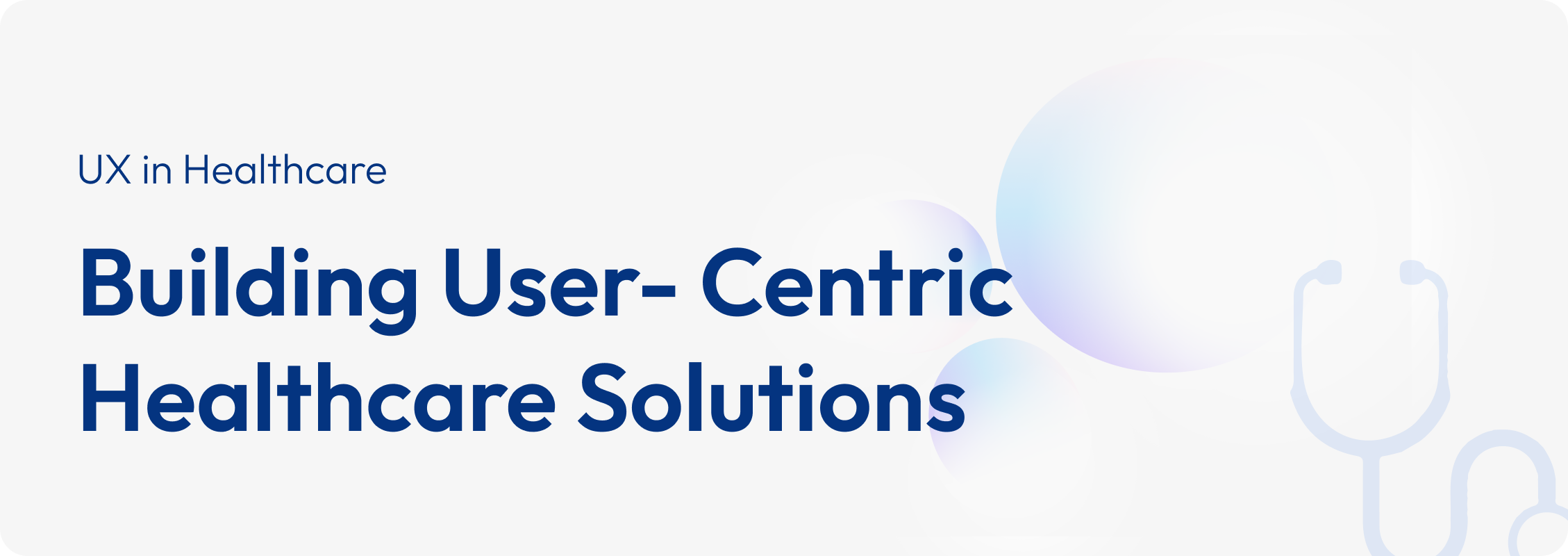Blogs
Healthcare UX: The Intersection of Design and Empathy
Sasha Korah
Posted On October 4, 2024

As Alien.design puts it, UX in healthcare, or healthcare user experience, is all about creating user-friendly experiences for everyone interacting with the medical field. This applies to both digital products and physical interactions. It involves increasing the efficiency of the workflows for every stakeholder (For patient and caregiver) via physical or digital pathways.
Here are some takeaways from my recent stint with a major client in the healthcare industry.
Process: Collaboration is key
I recently had the privilege of being part of a team that was working on creating an end-end experience for devices used in critical care scenarios. While the ask was for me to focus on the GUI design for connected apps in the same ecosystem, I was given visibility into how decisions were made in every other vertical of design. The teams collaborated instead of working in silos and valued contributions from every member regardless of their expertise. This holistic approach elevated how I approached the UX process as well. It gave me a fresh understanding of how important it is to envision the overall experience from the perspective of every stakeholder involved in the process.
There are several aspects of a healthcare product or system which if designed deliberately can add value to the overall experience. All of these function together to keep the user informed and engaged at every stage of the experience journey. I have included three of these which gave me the most practical insight.
Packaging: Accessible, informative
One of the earlier versions of the product was designed perfectly to fit the end users needs. It was to be installed in public places with instructions for maintenance at regular intervals.
Every aspect of the users context and demographics were considered and yet, during a usability test, it was found that because of the way it was packaged, they missed out on the instructions to assemble it. The packaging was such that the device itself was placed on top of another layer of packaging which had the accessories that came with it, but it was not mentioned clearly in the IFU that the accessories had to be installed before it could begin to be used. As there was no clear indication that additional setup and assembly was required besides a QR code to a digital IFU, non-mobile users simply lifted the device out of the box and kept it in the place of use without proper set-up.
An article by uiintent on accessibility and the underestimated pitfalls with packaging & labelling covers the aspect of considering fringe elements besides the product and GUI design to elevate the overall user experience.
Digital UX and GUI Design
Most healthcare devices have turned to digital interfaces to display data or help process information. Be it an embedded GUI or a website with instructions for use, every aspect of the design needs to be user friendly. As many healthcare devices provide critical care, it’s important to never make assumptions unless they can be validated via testing.
It’s also challenging to design a device or experience that’s one size fits all as the clinical regulations, protocol, patient care etc varies from region to region or country to country. That’s where a certain level of customisation comes in. Tailored experiences atleast to a certain extent is a great form of value addition. It increases user retention and builds trust.
Since I focused mainly on the UX of the product on the project, I found the following tips quite helpful:
- The overall experience must be intuitive and functional
- Clarity in layouts and information displayed improves overall efficiency
- Fewer the levels of navigation, the better
- Consistency in tone and visuals make for a seamless experience
- Clear and simple language is comforting to the user
- Visual aids go a long way to represent complex medical information.
Usability testing
Usability testing provides you with valuable data and insights and helps uncover what works or does not. Observing how users interact with the application gives insights into possible UX improvements. It helps you to iterate on the design solution rapidly and accurately.
Here’s a memorable example of how usability testing broke assumptions during a healthcare project:
A usability testing team who was testing out a product simulated a critical care scenario where the user had very little experience in using the product. Once the environment was simulated, and the device was in use, the user panicked and pulled out the battery from the device upon facing a roadblock in the process. This response was so new that it prompted a long discussion on redefining the troubleshooting flow for the most unlikely of edge cases.
Conclusion
These are but some high level takeaways from my personal journey with healthcare UX. Designing for healthcare is a whole other ballgame compared to other products due to drastic consequences from even the most minor error. While I learned that it requires decisionmaking driven by research, testing, and several rounds of iteration, I also understood that mindset is equally crucial.
At the heart of it all, healthcare experiences need to be designed with radical empathy. It can be quite rewarding when you approach the process with the awareness that even a properly designed button could be lifesaving one day.
References
Daunus, T. (n.d.). What we do. Accessibility in Healthcare: Underestimated pitfalls with Packaging & Labelling – uintent EN. https://www.uintent.com/what-we-do/case-studies-blog/blog-articles/accessibility-in-healthcare-underestimated-pitfalls-with-packaging-labelling


